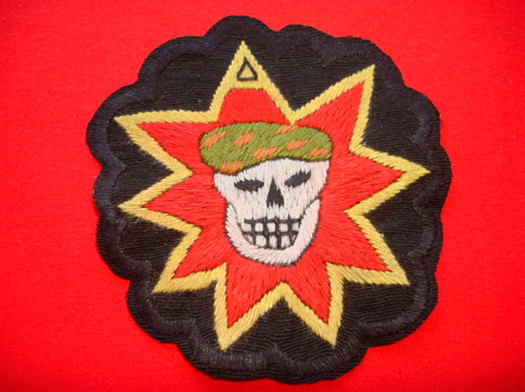
MACV-SOG B-52 Project Delta
Having an appreciation for design, I have long been interested in military patches. This started as a teenager, when friends of mine were drafted to serve in the Vietnam War. Stripes and bars were common, but other patches were somewhat mysterious. I reckoned them to be for a particular service or specialty. And later, around 1968, I saw John Lennon wearing a military shirt with patches — and now they had somehow morphed into graphic symbols of the anti-war movement. Lennon made military patches cool.
With this in my past, I recently followed the keyword search “handmade” on eBay and accidentally stumbled across an entire series of “handmade” military patches. Handmade? The obvious question was why? Once on the eBay site, one image after another revealed that I was looking at some of the most unusual and over-the-top vintage U.S. military patches I had ever seen. But why were these handmade? Surely these odd patches could not have been sanctioned and approved by the United States Army. What peaked my curiosity most were the many patches I saw of skulls — symbols of death. These patches reeked of evil, of a military pent on mayhem. They reminded me of something I might see on the jacket of a member of a motorcycle gang. I’ve been wondering: Could our military members have openly worn wore patches like these?
My questions to the eBay seller oddly went unanswered, so I called the owner of Alamo Military Collectibles in St. Louis. There I spoke to Thompson Knox, one of the owners, who was able to answer all of my questions. Thompson and his partner Pete Polizzi have owned Alamo for almost 22 years.
“Handmade patches for soldiers began during the Vietnam era,” he told me. “Basically, some soldiers wanted unique patches to represent significant events in a soldiers tour — an unrecognized battle, a particular subgroup or unofficial unit.”
My first question was whether or not these patches were allowed by the military brass to be worn on their uniforms.
“Absolutely not.” answered Tom. “These patches were worn secretly, on the inside of hats or the inside of shirts. They were secretly flashed to other members of the group or unit, but these patches were basically a private affair.” In fact, said Knox, images of skulls on patches or insignias were officially forbidden by the military.
I asked who made them.
“Back then, any local Vietnamese with a sewing machine could make a soldier a patch. These patches were made in very small quantities — and some of the patches you see could be one of a kind.”
With that information, I share with readers some recently discovered underground military patches spotted on eBay — handmade and unapproved, each with their own personal history and symbolic meaning.

